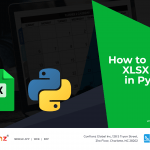Keeping your business’s IT up to date is a delicate balance. On the one hand, technology is constantly evolving in new and exciting ways that can revolutionize your business’s productivity and security. But on the other hand, as the saying goes, if it isn’t broke, don’t fix it.
Updating a personal computer is one thing, but updating your business’s IT is another. IT infrastructure is a delicate balance of many programs working together in a fragile alliance. One ill-advised update can bring the system crashing down. So if you are going to tempt fate and attempt to modernize your IT, you need to think tactically.
That’s why we’re going to help you and give you three things you definitely should do and three things you absolutely should not when attempting IT modernization for your company.
Do: Make Sure You’re Updating for a Good Reason
Before you throw out all your old systems for the latest and greatest thing, make sure you’re thinking the process through thoroughly. Depending on the type of program, many legacy applications have very similar features to their modern counterparts. So while their UI may be dated, many legacy programs still hold up from a functional standpoint.
Ask yourself if you’re updating for the sake of modernizing or if the new system you’re considering really has enough advantages to make the hassle and disruption of modernization worth it. Then, assess what the new design offers compared to the old one and make a cost-benefit analysis.
Don’t: Stay Stuck in the Stone Age
Yes, modernization can be a lot of work, and you want to think through the process before jumping in. But that doesn’t mean you should cling to technology that has outlived its usefulness because you’re afraid of change.
Of course, don’t upend your entire system just for some bells and whistles that add minimal value to your business operations. A lot of modern technology can offer speed, efficiency, and features that seriously improve your business’s bottom line. And even if your current system is still usable, you will limit yourself in terms of integration with newer programs that may not have support for older systems.
Today’s cloud ERPs can leave on-premise ERPs in the dust regarding scalability, agility, and accessibility. And you will limit your ability to keep up with your competition if you’re unwilling to make the leap.
Do: Pick Your System Wisely
Once you’ve decided to modernize your IT architecture, the system itself is one of the most important considerations. The specific advice will depend on your industry and software needs, but there are some general guidelines for picking systems.
- Prioritize ease-of-use: Migrating to new systems is difficult enough without having to focus on learning needlessly complex software. Instead, read reviews from real people about whether or not a system is as easy to use as it says it is.
- Choose comprehensive support: If humanly possible, pick software with good customer service. On-demand, helpful, and knowledgeable customer service can be the difference between a successful modernization process and a total disaster.
- Double-check your budget: Many legacy systems were offered as a one-and-done payment, whereas now most systems operate on a subscription basis. While this opens a lot of doors features-wise (such as cloud support), it also leaves you open to unexpected costs. Nothing will stop you in your tracks quite like finding out that you don’t have the funds to continue modernizing.
Don’t: Neglect Company Culture
Focusing on the nuts and bolts of IT modernization makes it easy to lose track of the human element. Every company has its peculiarities and ways of getting things done, which won’t necessarily mesh with every IT system.
The whole process will run infinitely smoother if you factor in your existing culture and include your management and employees in the process. You should set realistic goals, stay open for feedback, and be open to modifying the system based on results.
While factoring in the experiences and thoughts of every employee may not be realistic, consulting with the heads of departments can give you a good idea of the needs and idiosyncrasies you’ll need to account for.
Do: Take It Slow and Cover Your Back
Once you’ve decided to modernize, it’s tempting to rush through the process to get to the finish line. But modernizing IT infrastructure is a process that is best planned out in advance. Unlike modern modular solutions, many legacy systems are a hodge-podge of out-of-date systems and programs that depend on each other to work.
Make sure you consult and work with your IT team to create a reasonable plan of attack for tackling modernization. They will have specific insights surrounding modernization that will help the process along.
You also need to ensure you have adequate backups and fail-safes in place if something goes wrong (which it probably will at some point). Modern architecture won’t be very helpful if you lose all your essential data.
Don’t: Forget Training
Modernized IT will only increase your efficiency if everyone in your company knows how to use it. Choosing technology with an easy-to-use interface and a low learning curve is an excellent first step. But you should also ensure everyone is comfortable and confident using the new technology.
Unless everyone in the company is an IT professional, you’ll likely have a range of skill sets and abilities apropos of technology. Never assume something is intuitive, and offer support, classes, and resources to help employees get comfortable using the new system.
Many systems will include training as part of their package, but if not, you should explore third-party training.
Bring Your Tech Into the Future
Modernizing IT infrastructure is an undertaking, but one that can revolutionize your business. As long as you update strategically, you can take advantage of improved automation, security, and efficiency.
If you want to modernize your IT infrastructure, Confianz can help. We partner with businesses to help them reach their potential. Confianz Global is a well-established company in Charlotte, NC that specializes in software development and is a prominent provider of comprehensive IT services. Our team specializes in developing custom mobile applications for both iOS and Android platforms. Additionally, we offer web development services and assist with implementing Odoo ERP solutions.
So call us today to get started!







